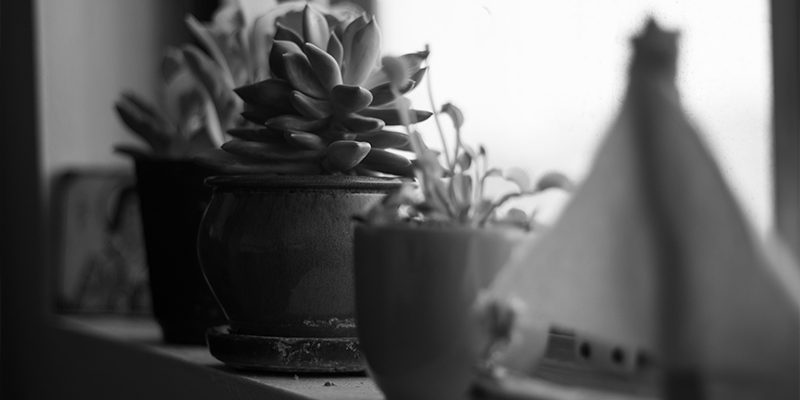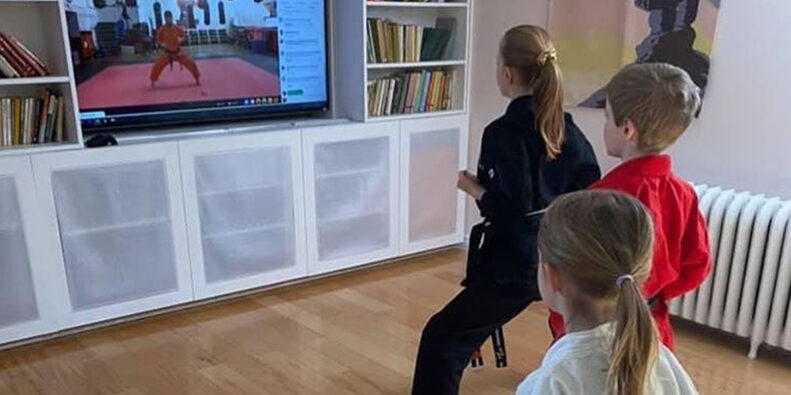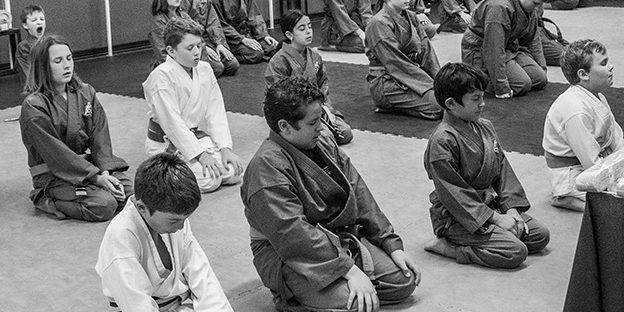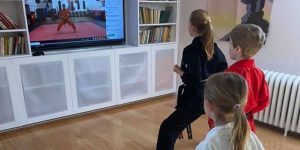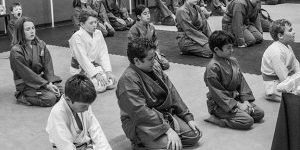Exercises to help you find presence and live in the moment
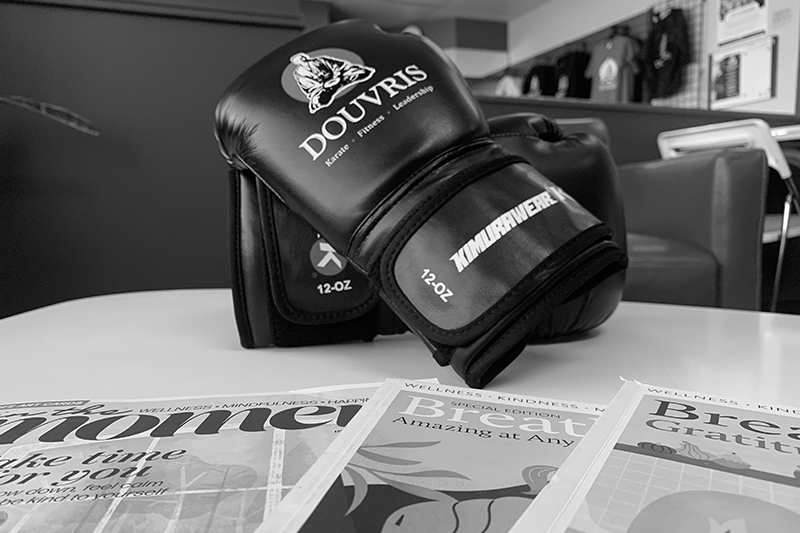
What does it mean to live in the present moment?
We often hear this phrase “be present, be in the ‘here and now’” but what does that actually mean? For Master John living in the moment means consciously and actively noticing his current surroundings and environment. It often comes when he encounters or witnesses something very memorable or beautiful, in times of deep focus and movement. These moments bring a sense of awe at the simplicity of life but also a sense of gratitude. I think of being in the present as complete awareness of your thoughts and actions in addition to your surroundings. It requires a lack of attachment to the past and the future.
Why is it so difficult to live in the now?
We’re a species meant to be hyper aware of threats, or unpleasant realities. This is how we avoid them and protect ourselves. It’s how we’ve survived for so long, but it can sometimes feel like our biology or nature is working against us. To add insult to injury, we’ve gotten so used to constant stimulation that simply being present can often be really boring or scary. We try to pass the time by scrolling through Instagram feeds and watching Netflix and YouTube videos rather than living in it distraction free. This kind of distraction can be a form of self soothing. Sometimes it is a very necessary coping mechanism but often it is just used to pass or waste time. I think many of us are scared to sit with ourselves for too long out of fear of what we’ll find.
What are the benefits of living in the present?
Things like mindfulness practice, meditation or silent contemplation can be so boring they’re stimulating. They can help improve our mental and physical well-being by allowing us time to slow down. It can give us time to digest our thoughts and emotions. In our fast paced world and glorification of “hustle” culture, we often forget about the inherent value we have just by being a living creature. We are not defined by our productivity, we are defined by how we align our day to day actions with our values as individuals and as a social species.
We get to know our true selves when we slow down and create space to self evaluate and cultivate self awareness. Being present and mindful is a skill that is incredibly useful in every setting. How many times have you made a major mistake at work because you were distracted by your thoughts or things going on around you? How many times have you made a verbal mess up in an important conversation because your mind was somewhere else? It happens to all of us. However, we can work to minimize these situations by living more intentionally and being in the present moment.
The importance of the past, present and future
Living in the present moment doesn’t mean you can’t think about the past or the future at all. It’s actually really good for us to be able to draw on past experiences and to look forward and even plan for the future. You can have and acknowledge thoughts of the past and future without becoming absorbed in them. You can even plan for the future while remaining present. it’s all about your awareness. How you feel while having thoughts about the past and future is probably a good indicator of whether or not you’re getting carried away or dwelling on these thoughts. If you notice your mind is racing, or your emotions are all over the place and unpleasant, you may be giving too much power to these thoughts.
It’s not often that we, in our culture and society, have to regularly deal with major life threatening situations. Even if something that happened or something coming up is anxiety producing and threatening, we are generally privileged enough to find ourselves in a safe environment. Not everyone in this world is this lucky and privileged. By recognizing this I’ve found that my anxieties about the future or the past have decreased significantly and the thought “my mind is making me feel unsafe, but I know that in the physical world I am” has acted as a mantra for me through countless episodes of depression and anxiety.
Some exercises to practice living in the present moment:
These exercises are straight out of my DBT (Dialectical Behavioural Therapy) handbook. Disclaimer: I was a participant in a 1 year DBT program and have no medical or therapeutic training on this topic. I’m simply sharing my experiences with the exercises I have learned along the way to help me find mindfulness and presence in my day to day life. These three exercises are things that I practiced and continue to practice daily in order to bring more mindfulness and presence into my life.
1. One mindfully:
Do the dishes and ONLY do the dishes. Walk the dog and ONLY walk the dog. Exercise and ONLY exercise. Turn off the podcast, music or tv show playing in the background. Pick one simple task every day and be intentional about it. Bring awareness to your body and recognize the different sensations you feel while completing the task. If you choose to practice while doing the dishes, how does the warm water feel on your hands while washing the dishes? Can you smell the scent of your dish soap? Can you focus on the sound of the running water? How about the silence when you turn off the tap?
2. Observe & describe your thoughts:
You can pick the same task as the previous exercise or you can choose another. This time we’ll focus more on the mindfulness of our thoughts. While you’re doing the dishes or walking the dog one mindfully, start to witness your thoughts come into your mind as if they’re on a conveyor belt or one of those weird vertical escalators that make you walk faster in an airport. Can you pick one thought up at a time and describe it? For example, “I’m having a thought about _____”. Your task is to fill in the blank and then put the thought back on the conveyor belt and let it move away from you. Move on to the next one.
3. Focused breathing:
I find these are the most useful exercises and I carry them with me and use them whenever I need, no matter where I am. All you have to do is bring your focus to your breath and make your inhale and exhales super intentional. You can use numbers, inhale for 4 seconds, exhale for 7. Maybe you inhale for 5, hold your breath at the top for 5, exhale for 5 and hold your breath at the bottom for 5 and repeat. I always find making my exhale longer than my inhale to be extremely calming but everyone is different. Sometimes being so focused on your breath can cause anxiety even when you’re trying to reduce it, so be mindful of this and start slowly. If the numbers are too stressful, try colours. Inhale while visualizing a cool colour filling up your body with your breath and exhale visualizing yourself releasing a warm colour as the air exits your body. I find these types of breathing exercises helpful before bed, when I’m feeling stressed at work or school and even in the morning to start my day off on a more calm and intentional note.
Mindfulness, living in the moment and self awareness are skills that can be cultivated and grown. Just like our karate practice, it takes time to “perfect” or “master” a technique. Be patient with yourself and be kind to yourself. You’ve taken a step towards a more present and peaceful being just by clicking and reading to the end of this post. Thank yourself for that.
Joining our mindful family is easy, reach out to info@douvris.com or call 613-234-5000 to join our dojo today or subscribe to receive “Mindfulness with Douvris” updates every month below:

